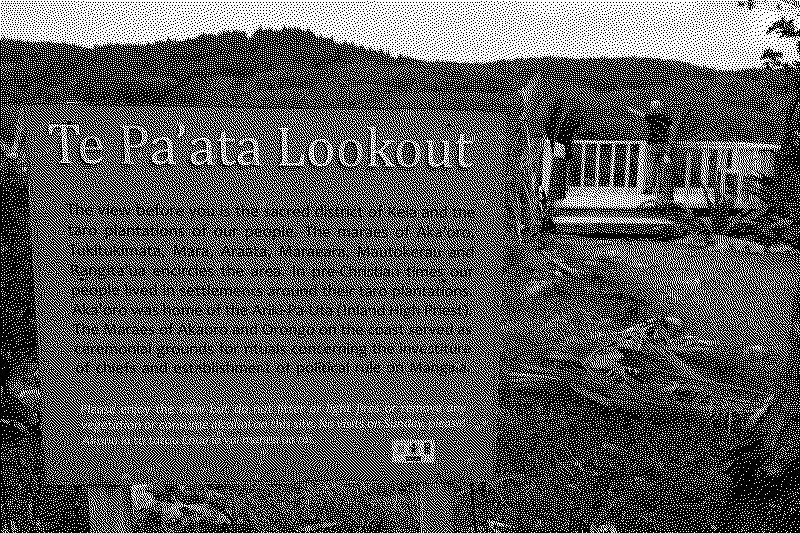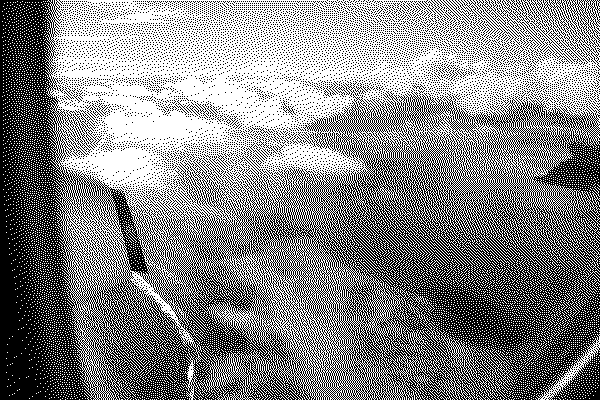Meeting Mangaia's ancestors

Walking on Mangaia with Allan Tuara we encounter his ancestors, how their sacred places were destroyed, how their gods were forgotten. Mangaians are stubborn and independent, and maintain that reputation. When for example the Cook Islands Land Court wanted to set foot on this island, it was met with resistance. Therefore Mangaians still settle land matters and disputes as they feel best. Few people are better placed to explain this island than Allan Tuara.
The landscape of Mangaia has a particular relief with concentric resource zones. If you start at the lagoon and move inland, you first have to climb through the makatea [which "surrounds the island like a fortress wall", wrote Michael Reilly]. It is hard limestone with sharp pinnacles and vegetation sticking out of the crevices. But the whole island rests on a pedestal of fossilized corals and is veined with caves. The second ring is a man made road that goes around the island, with palm trees at some stretches, and pockets of houses and hamlets. Then the landscape rises up towards a third ring and drops to concentric valleys where the islanders grow vegetables and fruit. Hills climb up steeply then towards Rangimōtiʻa, the mountain in the center of the island. From up there, rivers flow towards the sea [in a "radial drainage system"] and their valleys have divided the island in six districts.
Allan Tuara takes us to the Kei'a taro swamp and shows us its smart irrigation system that has been constructed over time on one of the rivers, on the East side of Mangaia and close to Oneroa village. The principle is easy: water comes in at the top, is directed to fields and plots and leaves the swamp on the lower side. Once, says Allan, the swamp was flooded by heavy rains but functioned as a cushion that prevented flooding of the village.
In pre-Christian times, Tamatoa Bambridge wrote, this system was "overlaid by religious beliefs venerating water." Rangimōtiʻa was the navel from where arteries or 'blood streams' brought the swamp to life, as through umbilicals, to feed man. The irrigation system took the shape of a body and relied on the collective spirit of the farmers, working in reciprocity and mutuality with the farmer at the top carrying the responsibility to share the water with all the other farmers.
Close to the swamps were the marae, the sacred altars where all the communal functions took place. "Any function held on the island, any installation of a new chief will be held in that square. And for any sacrifice the bodies will be laid on these stone platforms", says Allan Tuara. It angers him that all the marae have been destroyed. He blames the Christian missionaries. We find the ruin of only one marae, some stones scattered around and a sign pole, on the side of the coastal road, not far from the Avarua warf. "When the missionaries came, they lifted the stone slabs, took them down and laid them again at the pathway up to the church." He points at the path in the garden of the CICC church in Oneroa.
These destructions happened brutally, but Allan thinks that the missionaries imposed a smart policy of assimilation on the Mangaians: "they pulled the marae down and brought the stone slabs to the church. That's very symbolic, isn't it? So, 'this is where you go, you don't go up there, you come on here' and it's always easier for local people to identify by walking on their own merit stones, to the church. They destroyed that place of worship. They destroyed our culture, let's put it that way. Today, we don't know who we are. We think we are Jews. They'll tell you everything, the history of the Jews and the Bible and who wrote this and that... but ask them about our own history... It's been hard. I think it's because some of our local heroes have been assimilated into the English church heroes. It makes it easier for the mission to convert the islanders by working together and not so much destroy their heroes, but identify them with the Bible. They've got their converts, and today everything is forgotten. All their life now that people try to revive the culture. But where is it gone?"
You could say that Allan Tuara has a low-fi take on the island's life. Why speed up if the sea and the land provide enough for everybody? But that is the past. "In my younger days," he says, "we only fish enough for today. You catch enough fish, and that's it. But now... things got worse when they brought in the freezer. Before, you don't bring a canoe loaded with fish and dump them in a freezer. Rhey didn't overfish, they just brought home one or two or three fish and shared it out in the community. And if you can't get out or you don't have a canoe, the fisherman brings you something, that's it. But now there is somebody on the warf waiting for the fish to come in and to buy and the price is going up all the time." Fish, a resource from the ocean is bein moneytized.
Asked about deep-sea mining, Allan Tuara sees a similar mindset. "The thought of how much money we're going to make, how rich we're going to be, makes us debt blinded. They have showed us the fancy equipment. 'We can do this, we can suck this out, the dirt will settle down,' is what they say. But if you miss, that's it, there's not going back down there to put it all . We might destroy the sea life. And without that sea life down there, what would happen? We don't know. We don't know what would happen, it has never been done before. We'll never know until the damage is done. And then it's too late. That's my thinking on it. I mean: surely, if, ìf we can invent something better... maybe in a few years time, solar might be the way to go... rather than destroy the planet?"
Sources mentioned in this article are: Tamatoa Bambridge, The rahui. Legal pluralism in Polynesian traditional management of resources and territories, The Australian National University Press, 2016 Michael P.J. Reilly, art. Talking Traditions: Orality, Ecology, and Spirituality in Mangaia’s Textual Culture, in: Indigenous Textual Cultures, Duke University Press. (2020)

